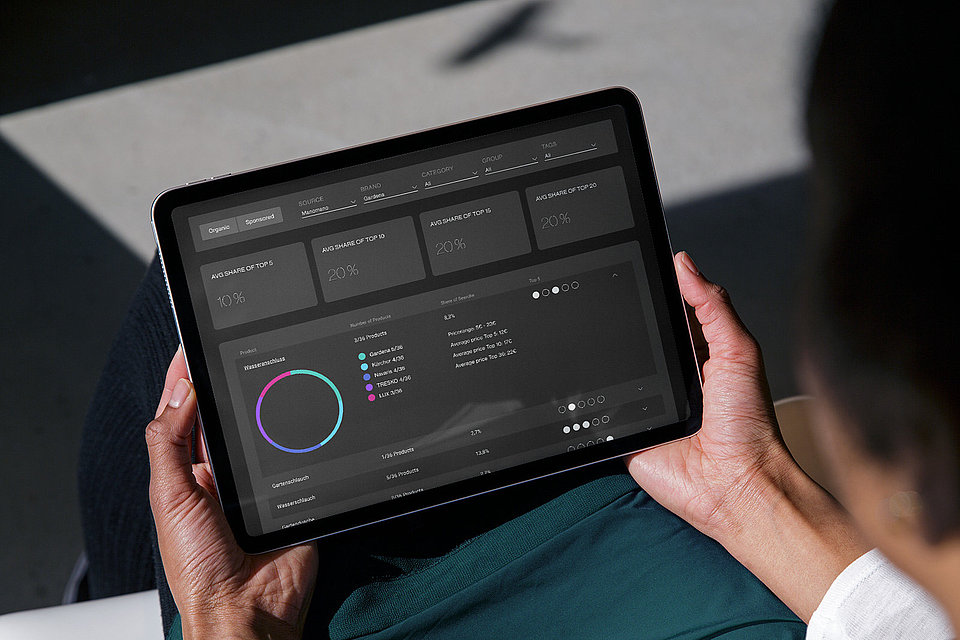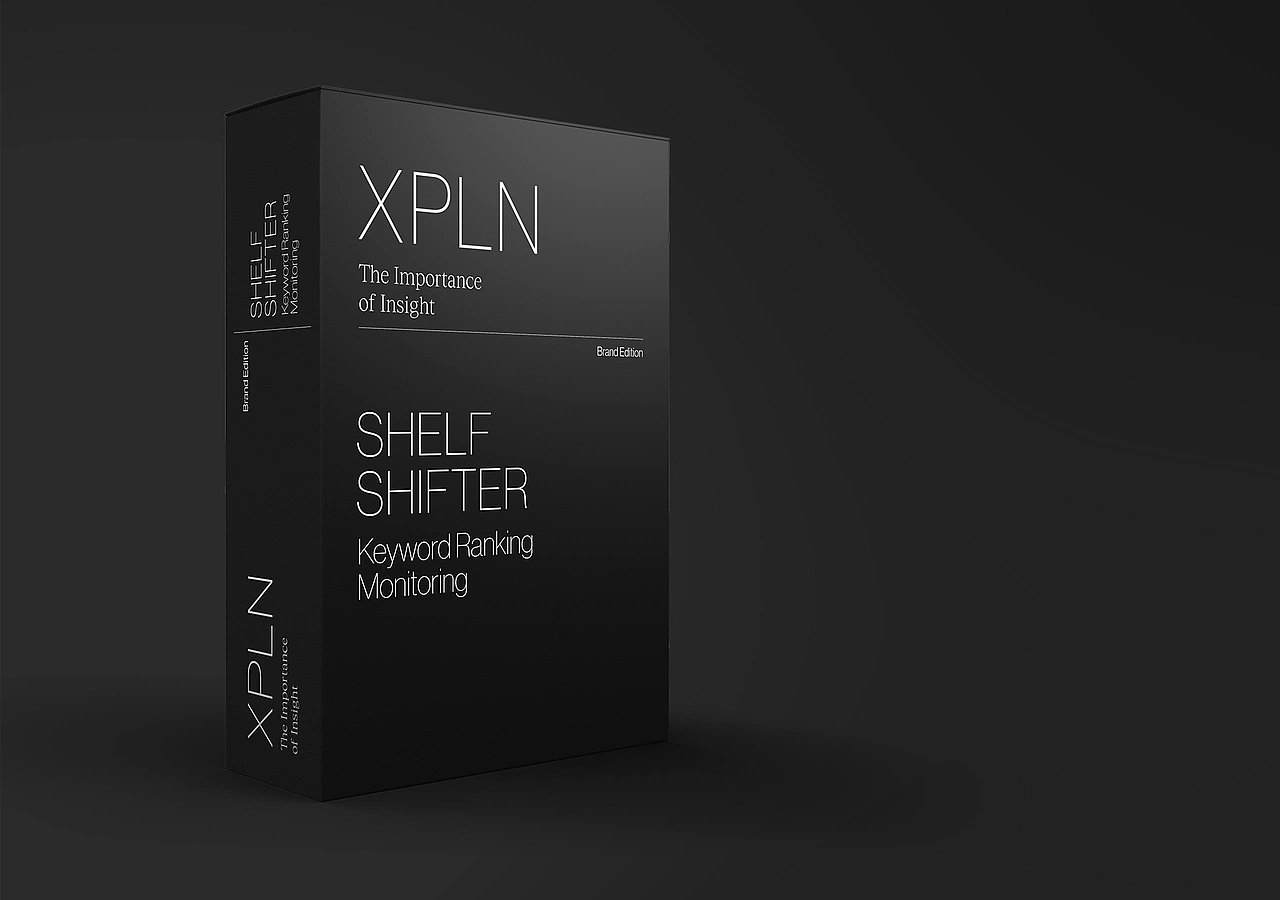
Monitor Marketplace Rankings
How Brands Dominate Their Categories on E-Commerce Marketplaces
Prominent positioning on marketplaces like Amazon guarantees high sales. No wonder it’s so fiercely contested! So how do brands manage to climb to the top? Here’s how a monitoring solution can help.
The Mission: Secure Top Product Positioning on Marketplaces
The same rules apply to Amazon, Target, Best Buy and the like as they do at the weekly local market: get to the front of the pack to do the best business. When it comes to online marketplaces, the ‘front’ becomes the first page of a product list for any given search term or in a category. Generally speaking, there are two ways for suppliers to get there:
- Organic rankings in search results or on category/overview pages.
- Paid positioning via retail media in product lists (sponsored products) or ads.
With high rankings and wisely placed ads, brands are aiming to achieve the following:
- Increase conversion and sales.
- Improve brand visibility and image.
- Save on the costs of sponsored positioning.
- Achieve the highest possible return on ad spend (ROAS).
The Challenge: Use Budgets and Resources as Efficiently as Possible
Marketplace rankings are never guaranteed. They change dynamically as marketplaces switch up their algorithms, new providers and products enter the market or competitors step up their game. So how are manufacturers supposed to maintain an overview with potentially thousands of products across different categories on multiple marketplaces? How can they make informed decisions about the best strategies and actions?
Yes, you can check rankings manually, but in random samples at most. And this method obfuscates any clear insight into the share of the digital shelf, in other words, the share of organic and sponsored traffic for relevant keywords compared to the competition. It’s inefficient and carries real risks:
- Falls in the rankings are only noticed when conversions plummet and sales fail to materialize.
- Important categories or keywords are either never optimized or only according to gut feeling.
- Nobody has any idea of which optimizations actually pay off.
- Hours of effort are invested in marketplaces without first analyzing the competitive environment.
- Advertising budgets for paid positioning and retail media are used inefficiently.
The Solution: Monitor Product Positioning with Keyword Ranking Monitoring
Manufacturers’ sales teams need to keep an eye on where products are placed on retail shelves. An automated solution for monitoring keyword ranking does just that – for the digital shelf. Web crawlers regularly scan online marketplaces looking at search results for specific key words, product listings on category pages and ads. The results are then stored and processed for in-depth analysis.
Providers are then able to derive the following information and metrics from the data:
- Which brands and products are shown for specific keywords or in specific categories – both in organic and paid results?
- In what order are the products listed?
- Share of Shelf: How high is your brand’s share on the first page (e.g. 3 out of 12 products)?
- Which ads and paid positioning are visible on a page?
- Share of Voice: How high is the brand’s own share of paid placements and ads on a page (e.g. 2 out of 4 sponsored products)?
- Who are the main competitors for specific keywords and categories?
- Are there relevant keywords where no or very few of your own products rank on page 1?
- What share do competitor products occupy in the product listings and how high do they rank?
- Which competitors have also booked paid ads and positioning, and how many?
Dashboards give managers an overview of key metrics as well as any changes in rankings. They can then use detailed analyses to make decisions and plan action points. Meanwhile, automatic notifications alert them to critical changes – say, for example, rankings are lost for certain pages or the digital shelf share drops below a set value.
Measures to Optimize Rankings and the Use of Advertising Budgets
Which specific measures are supported by the findings of the monitoring? What can e-commerce managers and other responsible team members action specifically to improve their success across different marketplaces and dominate their categories?
Before entering a marketplace (as a new sales channel): Analyzing the rankings gives an insight into the current competitive environment: Which products from which brands are placed there? Manufacturers can then use this information to conclude the potential a given marketplace has to offer. They can decide what strategy they’ll use there and the budget they’ll need.
Optimizing organic product rankings: The rules on how rankings are calculated or awarded differ significantly on individual marketplaces. That said, the following steps help boost rankings:
- Optimize product content (images, title, description, etc.).
- Improve products and services for better ratings and lower return rates.
- Monitor product availability and take action when products go offline or become unavailable.
- Leverage paid positioning and advertising for higher product sales.
Improving ROAS and cutting advertising costs: A prominent place at the top of a marketplace doesn’t come cheap. That’s why vendors have to check where their advertising budgets are best spent and bring the greatest return. So why continue ads where they already achieve high organic rankings? Instead, they need to advertise where their products might not otherwise be visible. That way, they achieve maximum visibility without wasting their budget.
The Result: Continued Growth Despite Tough Competition
The competition for the top spots on Amazon and other marketplaces is hotting up! Even the best software can’t change that. Instead, brands and manufacturers need a clear strategy and the willingness to work every day to grow. And for an added competitive edge, there’s always SHELF SHIFTER. Instead of spending hours on manual marketplace research, e-commerce teams can focus on their core tasks thanks to the data, which supports and accelerates decision-making. Plus, it enables intelligent budgeting, cutting costs.
And SHELF SHIFTER delivers even greater value when combined with the other solutions in XPLN’s digital shelf analytics suite: DATA STEWARD analyzes product content, JUDGEMENT DAY reviews customer ratings, and LIVE TRACKER monitors product availability. Used together, the data provides an all-around view of marketplace performance: we’re talking all aspects that influence rankings. The result? Optimizations become even easier and can even be partially automated.
High marketplace rankings are a must for continued strong growth on these sales channels. Our solutions enable companies to dominate their categories in the long term – despite tough competition.

Get to know our solutions for digital shelf analytics. We would be happy to discuss your individual use case in a free and non-binding demo.
